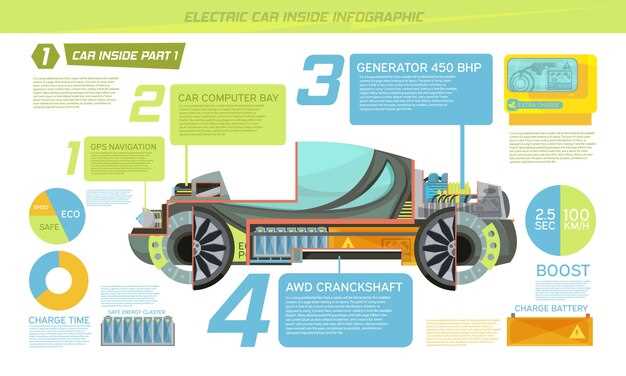
As car enthusiasts and racing aficionados alike know, the world of motorsports is constantly evolving, pushing manufacturers to create vehicles that not only perform well on the road but are also track-ready straight from the factory. This selection of cars offers impressive capabilities while retaining the comfort and features necessary for daily use. Whether you’re a seasoned racer or just getting started, these stock vehicles provide a thrilling experience right off the showroom floor.
In this article, we will explore the 10 best race-ready cars that exemplify the perfect balance between performance, engineering excellence, and everyday usability. These models have been designed with the track in mind, equipped with powerful engines, sophisticated handling, and advanced technology that collectively deliver an exhilarating driving experience.
From high-performance sports cars to modified variants of everyday vehicles, each entry on our list proves that high-speed excitement doesn’t have to be reserved for the racetrack alone. Join us as we delve into the features and specifications that make these factory models truly outstanding race-ready contenders, showcasing what happens when car manufacturers unleash their competitive spirit.
Top Features That Make a Car Track-Ready
To ensure a car is track-ready, several key features must be present, enhancing both performance and driver experience. First and foremost, a robust suspension system is essential. This system should provide exceptional handling characteristics, allowing the car to navigate corners with agility and precision. Adjustable coilovers are often standard in stock track-ready vehicles, enabling drivers to fine-tune the setup for specific track conditions.
Another critical aspect is weight reduction. A track-ready car is designed to be lighter, utilizing advanced materials like carbon fiber and aluminum to decrease mass. This results in improved acceleration, braking, and overall responsiveness. Additionally, the aerodynamic design plays a significant role; features such as front splitters, rear wings, and diffusers help generate downforce, enhancing grip at high speeds.
Performance tires are also a prominent feature. Stock tires must provide excellent traction to maximize grip during acceleration and cornering. These tires often have a softer compound that increases friction, enabling quicker lap times. Equipping a car with high-performance brakes is equally important; larger rotors and upgraded calipers ensure consistent stopping power and reduced fade during extended track sessions.
Furthermore, an efficient engine that delivers strong horsepower and torque outputs is crucial for performance. Many manufacturers offer track-oriented engines that are optimized for high RPMs, providing the power necessary to excel on the circuit. This aspect often includes upgraded cooling systems to prevent overheating during intense driving conditions.
Lastly, advanced driver assistance systems can enhance track performance, providing features like dynamic traction control, launch control, and electronic stability management. These systems help drivers maintain control, making it easier to push the limits of the car safely. With the combination of these features, a car can be prepared straight from the factory for the rigors of track racing.
Comparative Analysis of Stock Performance Among Race-Ready Models

The race-ready cars that manufacturers offer straight from the factory are designed with performance in mind, but how do these models stack up against one another? Comparing stock performance among these track-ready vehicles involves examining key metrics including horsepower, torque, weight-to-power ratio, and lap times.
Horsepower is a critical factor for any performance vehicle. Models like the Chevrolet Corvette Z06 and the Ford Mustang Shelby GT500 showcase how manufacturers optimize engine output. With over 700 horsepower, the GT500 stands out, pushing its limits on both the street and race track. However, the Corvette, while slightly lower in power, benefits from its lightweight construction and superior aerodynamics, translating into impressive track performance and handling.
Torque plays another crucial role in acceleration. Cars such as the Dodge Challenger SRT Demon deliver staggering torque figures, offering thrilling launch capabilities. This characteristic is essential for short-track races where quick starts can mean the difference between winning and losing. Comparatively, cars like the Porsche 911 GT3 focus on rev-happy engines that provide a different kind of driving pleasure, excelling in high-speed cornering and overall responsiveness.
The weight-to-power ratio is equally vital in determining a car’s competitiveness. Lightweight vehicles like the Lotus Elise prove that less weight can lead to sharper handling and quicker lap times. Meanwhile, performance-heavyweights like the Nissan GT-R optimize their power delivery and stability, showcasing how advanced engineering can compensate for added mass, keeping up with lighter rivals on the track.
Lap times on popular racing circuits further illustrate each car’s capabilities. The performance metrics combined with specialized tires and suspension setups allow models like the BMW M4 GTS to achieve quicker times, emphasizing the importance of holistic performance tuning. Other competitors, like the Audi RS5, merge luxury with speed, showing that factory models can also cater to comfort while still being track-ready.
Ultimately, while comparing stock performance among race-ready models, it’s clear that each car has unique strengths. The best track-ready vehicles combine raw power, precision engineering, and innovative design, giving enthusiasts options that suit differing racing needs and preferences.
Cost vs. Performance: Which Track Cars Offer the Best Value?

When it comes to selecting a track-ready car, the balance between cost and performance is often a primary consideration for enthusiasts. Manufacturers are increasingly offering stock vehicles that deliver exceptional performance right out of the factory, making it essential to evaluate which options truly offer the best value for the investment involved.
Track-ready cars come with features specifically designed for high performance, including enhanced aerodynamics, lightweight construction, and tuned suspensions. However, these upgrades can significantly affect the vehicle’s price. Cars like the Chevrolet Camaro ZL1 or the Ford Mustang GT350 provide remarkable performance numbers while remaining relatively affordable compared to competitors in the supercar segment.
Another critical aspect is the long-term value. A stock car that holds its performance and resale value is often a better investment. For instance, the Porsche 911 GT3 is an iconic model that retains its value remarkably well due to its track prowess and brand prestige. While the initial cost may be higher compared to some other options, its performance capabilities and market demand often justify the price.
Furthermore, prospective buyers should consider the maintenance and operational costs associated with track-ready cars. Some models might have lower upfront prices but could incur higher costs for parts, repairs, and insurance. In contrast, brands like Mazda with the MX-5 Miata offer a balance of enthusiasm and practicality, providing a fun driving experience without overwhelming financial commitments.
In summary, when evaluating track-ready cars based on cost versus performance, it’s essential to assess not only the initial purchase price but also the long-term value and maintenance costs. Options like the Chevrolet Camaro ZL1, Ford Mustang GT350, and Mazda MX-5 Miata stand out as strong contenders for those seeking performance without compromising financial sensibility. Choosing the right track car ultimately depends on individual performance goals and budget constraints.
